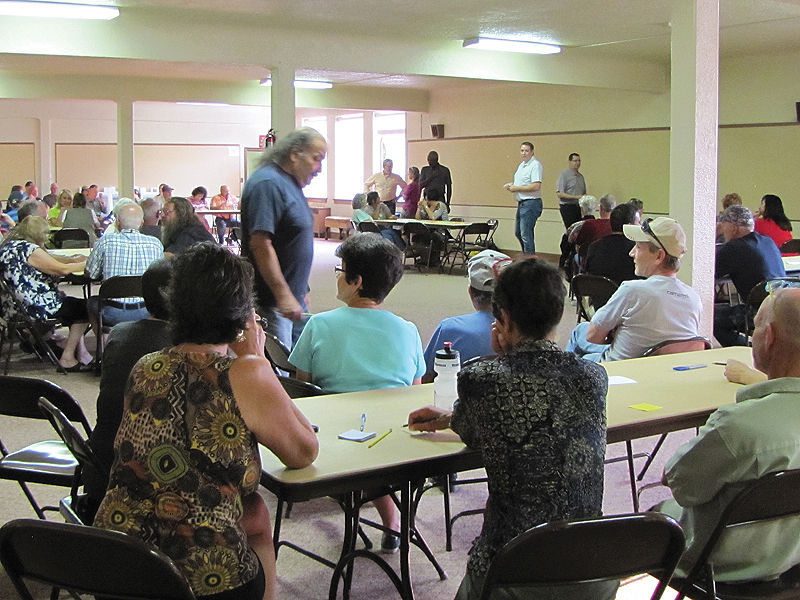Years of labor and millions of dollars have been invested in Helper’s transformational work. While there’s a lot to show for it, it’s all prologue for changes yet to come. You can still grab a camera and take plenty of “before” photos of potential quality of life or economic development improvements waiting to happen.
Focus on the parking lot of the former Wells Fargo Bank building, for example. Today’s snapshot shows the lot as it has always been. But in the not-so-distant future, an “after” shot would show how some tasteful landscaping and signage repurposes the space into a pedestrian-friendly corridor connecting some of Helper’s most important sites of civic pride: historic Main Street, the Senior Citizens Park and the river parkway.
That’s just one of a whole portfolio of suggestions compiled and presented last week to citizens and officials by a group of seven professional designers called a Sustainable Design Assessment Team – SDAT – a program of the American Institute of Architects. The team is all volunteers who hail from points across the country, except Utah. They wanted to emphasize that they had no local clients and no biases.
Their mission was to collect as much information and viewpoints as they could from Helper residents on what the future of Helper should look like, then mesh the desirable with the possible.
Helper was one of seven cities nationwide that qualified for an SDAT grant this year. The application process was spearheaded by a steering committee co-chaired by Lenise Peterman and Malarie Matsuda.
The team gathered its data from interviews, tours of the town and a well-attended meeting with residents at the Civic Auditorium. People had a chance to write responses to questions such as: a one-word definition of “Helper is…;” or a description of, “What would I do if I had 1,000 volunteers to help?”
The SDAT found that citizens had a strong attachment to the place, a desire to preserve and promote the city’s heritage and a lot of support for efforts to clean up areas that need it.
At the presentation meeting in the Civic Auditorium Friday evening, team leader Darrel Williams of Charlotte, NC, told the gathering that the overall challenge addressed by SDAT was, “How to meet the needs of the present without compromising the needs of the future.”
Highlights
Here are a few highlights of the recommendations. The Sun Advocate will report in greater detail as future projects take shape.
The city should develop a more detailed Internet presence, especially hours of operation for tourist attractions and businesses.
Tourism marketing should concentrate on complete itineraries instead of individual sites or events.
Storefronts need more attention to detail, should be lighted at night and upper floors need to be dressed up.
Improve signage and landscaping for connector streets and alleys.
Show more information on parking, and study the possibility of offering ATV parking.
Pay attention to the backs of buildings.
A general summary would probably be: remember that a visitor has no idea how to get around town or what to do after exiting the highway.
There were enough recommendations to get people wondering where to begin. The team suggested enlisting the help of a professional designer later to sort out priorities and costs.

